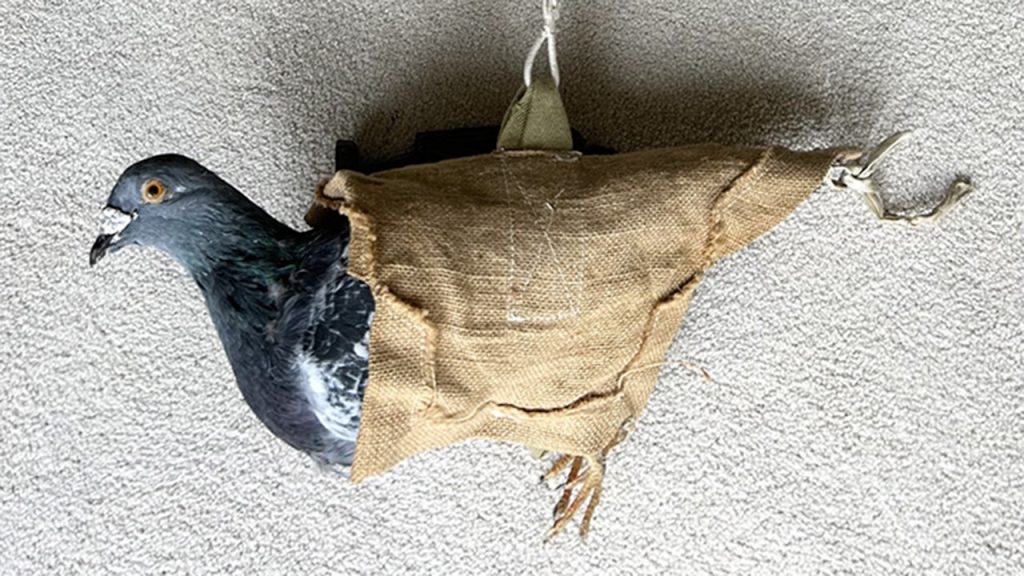A parachute that was reportedly attached to pigeons to carry handwritten messages during World War II has been discovered after roughly 80 years. The rare item was recently donated to the House on the Hill Toy Museum in England and was found in an old shoebox inside the home of a deceased woman named Mrs. Ellington. The parachute was believed to have been used before the D-Day landings on June 6, 1944 and is now on display at the museum’s D-Day exhibition, which showcases toys and other vintage artifacts. Carrier pigeons have been used for long-distance communication for over 2,000 years and were utilized during both World War I and II.
Carrier pigeons were originally used by the Romans over 2,000 years ago and were employed by the US Army Signal Corps in 1917 at the urging of General John Pershing. Despite advances in technology, carrier pigeons were still used during World War II as a means of communication in emergencies. The pigeons were trained to carry messages containing crucial information such as the location and strength of enemy troops, gun positions, pending attacks, traffic conditions, and other vital data. Pigeons were particularly useful in advanced observation posts where traditional means of communication were limited or impossible due to terrain or proximity to enemy lines.
The pigeon parachute found at the House on the Hill Toy Museum is a later model that was used before the Normandy invasion, or D-Day, in June 1944. In earlier years, a cage was attached to the parachute so pigeons could be dropped from aircraft to isolated troops. Prior to the D-Day invasion, pigeons in parachutes were used to drop messages over the countryside to alert French civilians of German troops’ whereabouts. The unique history of the pigeon parachute highlights the importance of carrier pigeons in wartime communication and the vital role they played in relaying crucial information amidst technological limitations.
The discovery of the pigeon parachute sheds light on the creative and unconventional methods employed during World War II to ensure effective communication in challenging circumstances. The use of carrier pigeons served as a reliable means of communication in emergencies and situations where traditional methods were not feasible. The exhibit at the House on the Hill Toy Museum provides a fascinating glimpse into this aspect of wartime history and showcases the ingenuity and resourcefulness of those who utilized carrier pigeons for messaging purposes. The inclusion of the parachute in the museum’s D-Day exhibition adds a unique and historically significant artifact to the collection.
The donation of the pigeon parachute to the House on the Hill Toy Museum offers visitors the opportunity to learn about the role of carrier pigeons in wartime communication and the historical significance of their use during World War II. The parachute, along with other artifacts related to D-Day found in Mrs. Ellington’s home, provides valuable insights into the methods and technologies utilized during the war. By displaying the parachute in the D-Day exhibition, the museum honors the memory of those who relied on carrier pigeons for communication and educates the public about this lesser-known aspect of wartime history. The discovery of the pigeon parachute serves as a reminder of the sacrifices made and the innovative solutions implemented during World War II to ensure effective communication in challenging circumstances.


